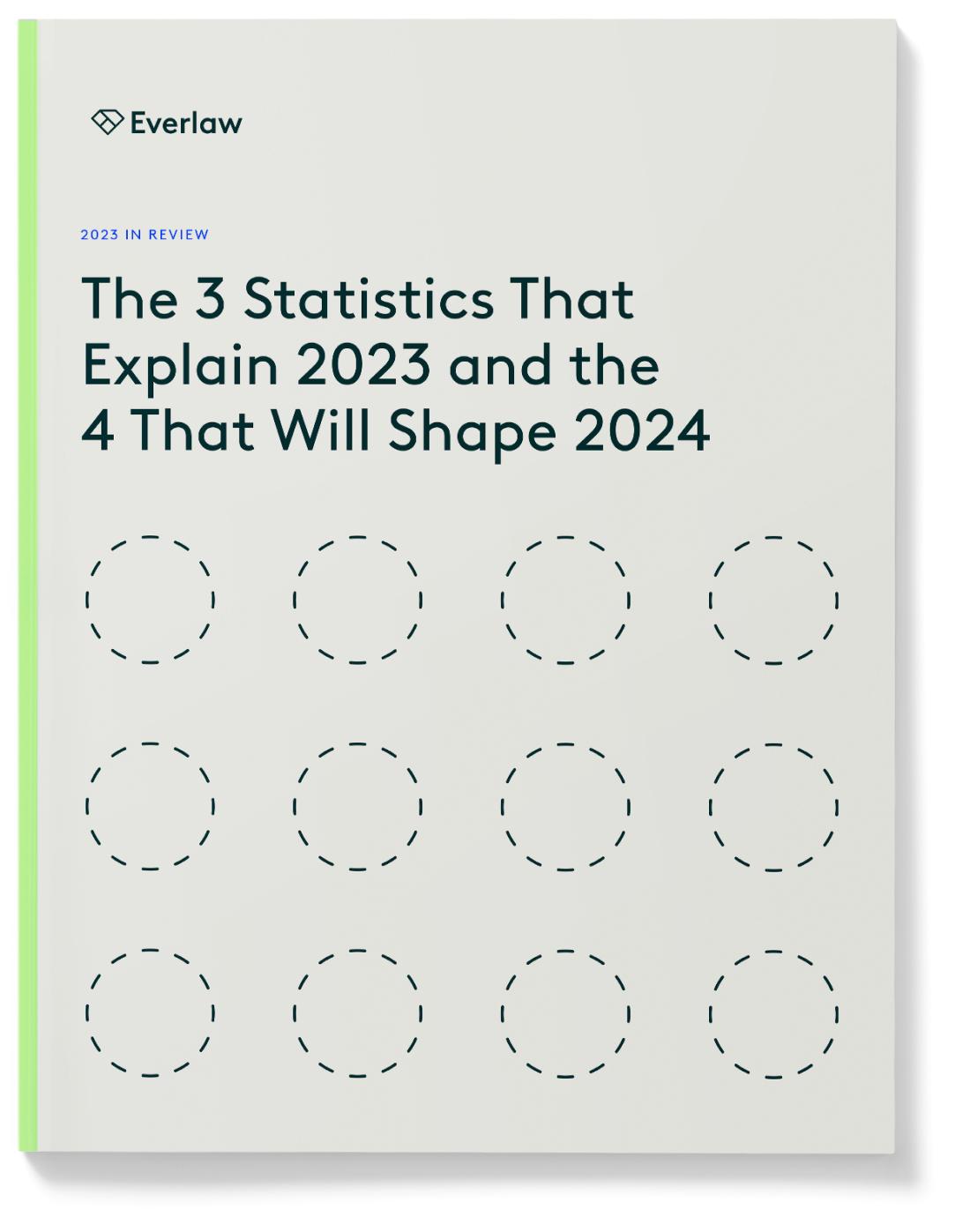Highlights from Everlaw’s 2023 in Review Report
by Casey Sullivan
Can you understand 365 days in just three numbers? For this year’s iteration of Everlaw’s annual year-in-review report, released today, we think you can.
The statistics that represent the evolution of litigation and investigations over the past year (there will, in fact, be more than three) should ring true to most legal professionals today. They identify challenges that have remained constant over years, but continue to intensify.
In this 2023 iteration of our annual year in review, we delve into the heart of these trends, with statistics taken directly from the Everlaw platform. In an era marked by unprecedented digital expansion, we look at the increased work facing legal teams today and the pivotal role advanced technology plays in making that work manageable. These numbers highlight not only key trends, but also the opportunities they present to innovative legal professionals today.
Three Trends That Defined 2023
Litigation Data Continues to Grow
If you feel like you had more to do in 2023, you’re right. With a 58% increase in the number of documents hosted by Everlaw year over year, it’s clear that document volumes are growing at significant levels.
Even the biggest matters grew bigger in 2023, with a 17% year-over-year increase, measured in GBs, in the largest single matter hosted on Everlaw.
This growth was not just in traditional emails or Office documents, either. In the past year, Everlaw users uploaded and automatically transcribed nearly 100,000 hours of A/V data for review. (96,619 hours, if we’re being precise.) That’s the equivalent of 50,852 viewings of Barbie, 2,367 readings of both 2023 Pulitzer Prize Winners, Demon Copperhead and Trust, or 1,039 years of Supreme Court oral arguments.
Team Resources Remain Static
While data volumes skyrocketed in 2023, team resources remained largely unchanged. Indeed, for the fourth year in a row, the average number of users across all Everlaw databases stayed the same, at 12 users per database, even as overall users grew by nearly a third. Those teams of 12 are tasked, year in and year out, with finding key insights in ever-growing document loads.
And for individual team members, those loads are growing significantly. In the past year, the number of documents per Everlaw user increased 17%, coming on top of 2022’s already large 9.4% increase.
Turning to Technology to Bridge the Gap
How are legal teams continuing to thrive in this new reality of increasing data and flat resources? By leveraging advanced tools that allow them to operate more efficiently and effectively despite these challenges.
Everlaw’s data shows that, throughout the past year, users moved quickly to adopt tools that allow them to handle growing data volumes with ease. Key among these is early case assessment. ECA projects allow legal teams early insights into their data, so that they can assess the viability of a case, understand risk exposure, and quantify potential costs at the onset of a matter – before they tackle the core work of document review.
In 2023, ECA projects grew by 271% overall. And for good reason. On average, Everlaw users removed 76% of the documents in an ECA project before active review. That’s a dramatic reduction, indeed.
Not only were 76% of documents in ECA projects culled before active review, but that number represents 17% of all documents hosted on Everlaw for the year – nearly one out of every five.
Of course, ECA was just one strategy legal professionals embraced last year. Everlaw data also shows increased adoption of collaboration tools, automated quality control tools, and more.
What’s Ahead for 2024?
This year’s review tells the story of a profession in the midst of a technological evolution, as the amount of litigation data explodes and new tools are increasingly leveraged to help bridge the gap between the work facing legal professionals today and the resources available to get through it all.
For the year ahead, four additional statistics reveal an even greater change on the horizon: the rise of generative AI, which promises to be the transformative technology of 2024 and beyond.
Download the full report for a deeper analysis of 2023 and a look at how generative AI will shape the year to come.

Casey Sullivan is an attorney and writer based out of San Francisco, where he leads Everlaw’s content team. His writing on ediscovery and litigation has been read by thousands and cited by federal courts.
